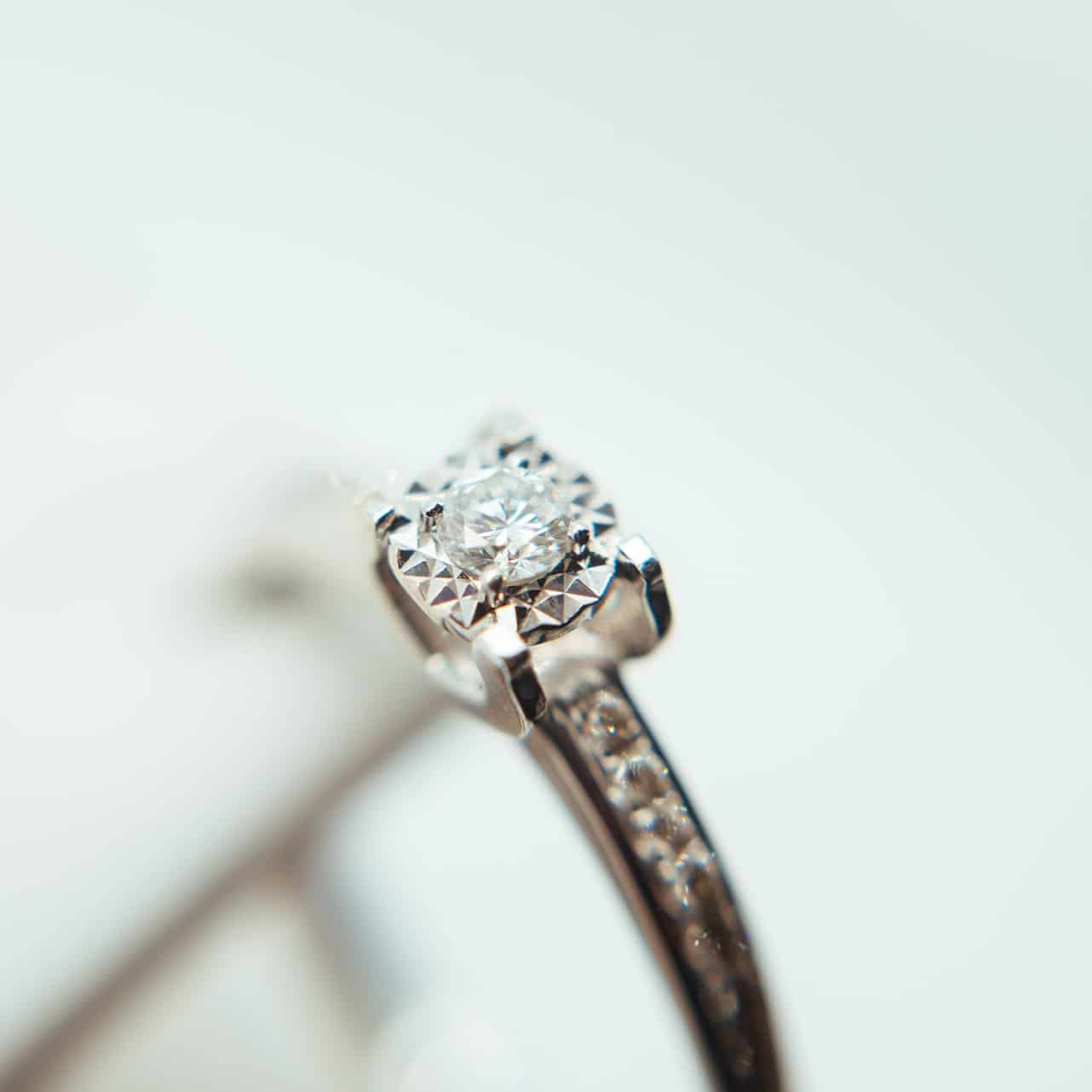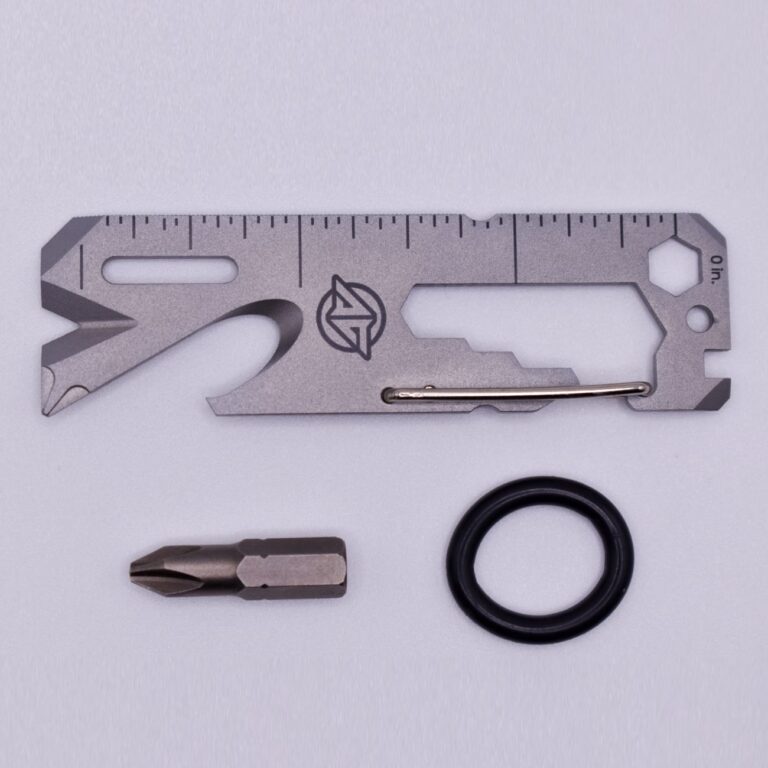
Here’s everything you need to know about conflict-free diamonds (and how to shop for them).

By now, it’s painfully obvious that almost everything we buy has a dark side. That’s true for everything from plastic to wool — in fact, it seems almost unavoidable.
Thankfully, more companies are realizing that ethics and sustainability matter, so there are increasingly better options out there. The problem is how to navigate a pretty ugly market to find the good stuff.
This is one of the major issues you’ll face when buying an engagement ring. It’s one thing to wonder whether the diamond you’re about to drop thousands on is real. It’s quite another to wonder whether it helped fund a war.
Here’s what you should know about blood diamonds and ethics in the diamond industry.
What Are Blood Diamonds?
A blood diamond is any diamond mined from an area controlled by people who oppose a country’s government. In short, blood diamonds help rebel factions or countries start wars against legitimate governments.
Most often, blood diamonds offer a source of cash flow for civil wars, though they can also fund international wars.
Also called conflict diamonds, blood diamonds are most common in Africa, where they’ve provided funding for several civil wars.
This was particularly prevalent during the late twentieth century. In the 1990s, diamonds were linked to brutal conflicts in Angola, the Democratic Republic of the Congo, and Sierra Leone.
Specifically, the money raised from blood diamonds often contributes to horrific human rights violations. In Zimbabwe, for example, children are forced to work in the diamond mines without protective clothing. In addition, if villagers who live near diamond fields don’t have their IDs, they’re often assaulted by officers.
Although blood diamonds aren’t often talked about these days, they’re still an enormous problem. And they’re not exclusive to African conflicts that fly under the Western radar, either.
Recently, Russian blood diamonds have helped fund the war against Ukraine. This is especially notable because Russia is the largest producer of diamonds, providing one-third of the world’s supply.
In other words, many of the engagement rings on the market today have Russian diamonds. (This is just one of many reasons why origin traceability is so important.)
Blood Diamonds and the Kimberley Process
In 2003, the United Nations mandated the Kimberley Process Certification Scheme (KPCS) to prevent blood diamonds from entering the market.
For the most part, the KPCS does seem to work. But unsurprisingly, it has also been widely criticized for not being effective or strict enough.
In the past, the KPCS targeted “rough diamonds used by rebel movements…to finance conflict aimed at undermining legitimate governments.” This was the KPCS’s definition of a blood diamond as recently as 2022. Due to the complicated nature of the war in Ukraine, some critics say the KPCS definition is too narrow.
However, the KPCS has recently changed that definition to “rough diamonds used to finance wars against governments.” Still, many consider this definition to be lacking as it doesn’t cover all human rights violations.
All of that said, the KPCS does work, but it’s not a perfect system. In short, Kimberley Process certification is important, but that’s not the only thing you should consider.
What Are Ethical Diamond Engagement Rings?
Ethical engagement rings are rings that use conflict-free diamonds that were mined using legitimate and fair working conditions.
Ethical engagement rings shouldn’t be confused with sustainable engagement rings, which are made using eco-friendly practices. Many ethical rings are also sustainably made, though that’s not always true.
Typically, ethical engagement rings are traceable, so you can know exactly where the diamond comes from. In most cases, you should even be able to access information about the conditions of the workers involved in production.
The best ethical engagement rings come from jewelers with clear statements of ethics and evidence to support their stances. The diamonds should be Kimberley Process-certified, though they may also carry additional certifications like GIA Diamond Origin Reports.
You’ll often be able to trace a diamond back to a specific mine, and you can then research that mine. This is a great way to see if the diamond you’re about to buy was truly ethically produced.

If a jeweler refuses to disclose the origin of a diamond or says the information is unavailable, be suspicious. That information should be readily available, and the jeweler should also have the appropriate documentation.
Natural vs. Lab-Grown Diamonds
Unlike a natural diamond that comes from the earth, a lab-grown diamond, well, is grown in a lab.
Although they’re made synthetically, lab-grown diamonds are almost identical to natural ones. In fact, natural and lab-grown diamonds are indistinguishable from each other to the naked eye.
Notably, lab-grown diamonds are significantly more affordable than natural diamonds. This fact has understandably made lab-grown diamonds popular among younger buyers.
But because of long-held cultural associations, lab-grown diamonds are often considered to be lesser than natural ones. This has very little to do with the quality, though. Lab-grown diamonds have come a long way since their debut in the late twentieth century.
The reason lab-grown diamonds are often snubbed is because they don’t hold the same societal value as natural diamonds. Real diamonds are rare and thus considered exquisite — and they have been for eons. Lab-grown diamonds, on the other hand, are easy to make and aren’t rare.
However, when it comes to ethics, lab-grown diamonds offer distinct advantages over naturals. Mainly, there is zero chance that a lab-grown diamond will be a blood diamond. If you know that a lab-grown diamond used fair labor, you can rest assured you’re buying a clean stone.
All of that said, the lab-grown diamond industry isn’t perfect. Since lab-grown diamonds are so new, they’re not yet beholden to established policies by regulatory bodies.
Because of that, some greenwashing does occur, but it’s hard to say how much.
Still, smaller jewelry companies that favor lab-grown diamonds often take pains to ensure sustainable and ethical practices. Many people argue that this is the best route to take when buying a diamond.
It’s also worth noting that the best lab-grown diamonds are made using a technique called chemical vapor deposition (CVD). This has less of an environmental impact than the alternative high-pressure, high-temperature (HPHT) method.
If you’re after a sustainable lab-grown gem, make sure you choose one made using CVD and not HPHT.
Ultimately, whether you spring for a natural diamond or opt for a lab-grown one is up to you. It depends on your budget, priorities, and preferences, and there’s no clear right answer.
The Best Ethical Engagement Rings
Today, there are plenty of options for ethically sourced engagement rings.
It’s relatively easy to find an ethical engagement ring, whether you want a natural or lab-grown diamond. Below, I’ve gathered a list of fantastic brands that prioritize ethics (and often sustainability as well).
This list is broken up into three price points: affordable (<$750), midrange ($750-$2,000), and high-end ($2,000+).
The Best Affordable Ethical Engagement Rings (Under $750)
Here are the best ethical diamond ring options that won’t completely drain your savings account.
Catbird
Catbird is one of the best budget-friendly, ethical jewelry companies out there today. The brand primarily uses recycled gold and diamonds, and it makes everything in its Brooklyn studio to minimize carbon emissions.

And surprisingly, Catbird has more than a few sub-$750 rings that range from more classic to more flamboyant.
With a recycled diamond and recycled 14k gold band, the $294 Diamond Fizz Ring is an excellent affordable engagement ring. If you’re after something different — and flashier — then the $745 La Vie en Rose Ring is worth a look.
Valley Rose
If ethics and sustainability are just as important to you as affordability, check out Valley Rose. The brand’s high ethical standards and slower production model mean that each ring is made with care.

You’ll find a curated selection of lab-grown diamonds, recycled diamonds, and small-scale salt and pepper diamonds. (Valley Rose has extensive traceability information freely available.)
The brand also has some great selections in this price range, including the Étoile Ring and Orion’s Belt Ring. Lab-grown diamonds will cost the least, but the natural salt and pepper diamonds aren’t that much more expensive.
The Best Midrange Ethical Engagement Rings ($750-$2,000)
Have a bit more to spend? This price range opens up a lot more options, especially if you’re after bigger stones.
James Allen
James Allen is a long-time favorite here at TMM and for good reason. The brand is pretty unbeatable if you want the classic engagement ring experience at a fairly accessible price point.

James Allen offers both certified conflict-free natural diamonds and lab-grown diamonds, so there’s a lot to choose from. Like any jeweler, James Allen makes fully customized rings, but it also offers ready-to-ship rings starting at $860.
Clean Origin
As its name implies, Clean Origin specializes in ethical, traceable diamonds. Founded by a third-generation jeweler, Clean Origin exclusively offers lab-grown diamonds to protect human rights and the environment.

Rings start at $990, and they’re more impressive than you’d expect for the price. Surprisingly, there are several options below the $2k mark, so you’re not limited to just one or two rings.
The Best High-End Ethical Engagement Rings ($2,000+)
Here are some excellent brands to consider if your ethical jewelry budget is in the thousands.
Brilliant Earth
Brilliant Earth is a prime example of a business founded on ethical principles. The brand created its own Beyond Conflict Free™ standard to ensure that its diamonds support fair labor and human rights.

Notably, Brilliant Earth offers blockchain-enabled diamonds that provide unparalleled transparency into origin and production. While these natural diamonds are extremely ethical, you can also browse lab-grown and recycled diamonds.
Aether Diamonds
Aether Diamonds takes a different approach to ethically sourced engagement rings by making diamonds out of air pollution. You read that right — the company’s patented process converts carbon dioxide into rough diamonds using CVD.

Aether’s rings also utilize recycled metal and are produced with 100% renewable energy. Most of the rings fall in the $2,000 to $7,000 range (though there are a few that are just below $2,000).
An engagement ring is something that you and your spouse should treasure for a lifetime. That’s not easy to do if you’re not completely certain that the diamond is conflict-free.
More importantly, buying an ethical engagement ring supports transparent practices in the diamond industry. (This is an excellent example of how to vote with your wallet.)
It’s also a good idea to keep this in mind when shopping for a wedding band. You can look for ethics-forward companies that make bands from recycled precious metals.
Questions? Comments? Leave them below!






